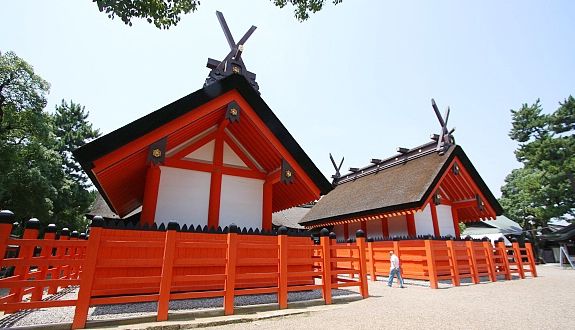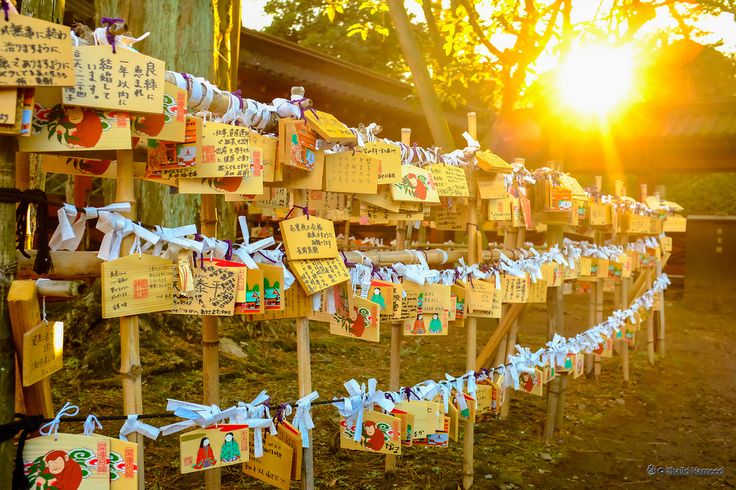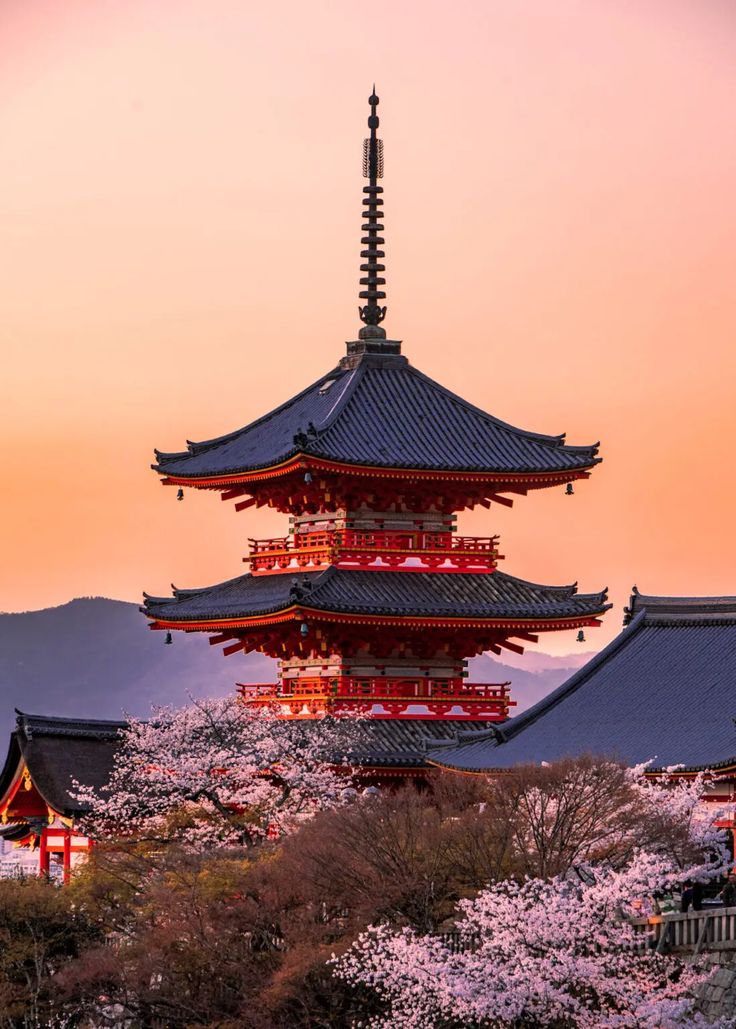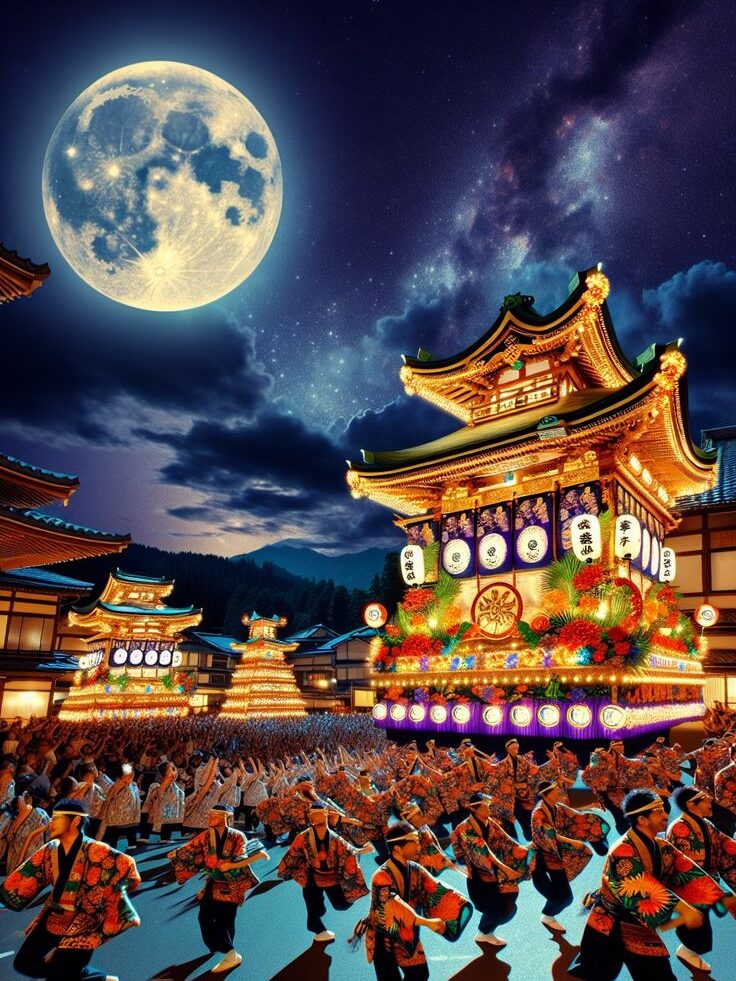
Japan is known as a country rich in culture and tradition, one of which can be seen from the existence of temples and pagodas spread throughout the country. These temples are not only places of worship, but also symbols of a long history, art, and unique architecture. In this article, we will explore the various styles of temple architecture, the philosophy behind them, and some famous temples that are tourist attractions.
Temple Architectural Styles in Japan
Shinto Shrine

A Shinto shrine, or jinja, is a place of worship in the Shinto religion that focuses on harmony with nature. The architecture of Shinto shrines emphasizes simplicity and respect for the environment.
Shinmei zukuri

This architectural style is known for its simplicity, using natural wood without any coating. The most famous example of this style is the Ise Grand Shrine, which is built every twenty years as a symbol of renewal.
Taisha zukuri

Taisha-zukuri is the oldest architectural style for Shinto shrines. Its hallmarks are gabled roofs and the use of single pillars. Izumo Taisha is a famous example of this style, with its beautiful curved roof.
Buddhist Temple

Buddhist temples have a different architectural style, often more grand than Shinto shrines.
Gongen-zukuri style

This style is a blend of Shinto and Buddhist elements. A famous example is the Toshogu Shrine in Nikko, which has elaborate ornate decoration.
Pagoda

Pagodas are iconic structures in Japanese Buddhist architecture. They typically have three or five stories, each story representing a natural element such as earth, water, fire, wind, and space.
Philosophy in Temple Architecture
Wabi Sabi
Wabi-sabi is a Japanese philosophy that values beauty in imperfection. In the context of temple architecture, this is reflected in the use of natural, unpolished materials.
Harmony with Nature
Japanese temple architecture is often designed to blend in with its surroundings. The use of wood, stone, and other natural elements creates a peaceful atmosphere for visitors.
Famous Temples in Japan
Kiyomizu-dera (Kyoto)

Kiyomizu-dera is one of Kyoto’s most famous temples. Known for its wooden terraces that jut out from the hillside, the temple offers spectacular views especially in spring when the cherry blossoms are in bloom.
Fushimi Inari Taisha (Kyoto)

Known for its thousands of red torii gates, Fushimi Inari Taisha is one of Japan’s most iconic shrines. The path to the top of the mountain is lined with these gates, creating a unique spiritual experience.
Todai-ji (Nara)

Todai-ji is famous for its giant Buddha statue (Daibutsu) located in the main hall (Daibutsuden). It is one of the largest wooden buildings in the world and is a UNESCO World Heritage site.
Horyu-ji (Nara)

As one of the oldest temples in the world, Horyu-ji has a valuable collection of artifacts from the early history of Buddhism in Japan. Its architecture reflects an ancient style that is still preserved to this day.
Pagoda as a Spiritual Symbol
Structure and Meaning of Pagoda
Pagodas usually consist of several levels with curved roofs. Each level has a spiritual meaning; for example, the first level represents the earth while the last level represents the sky.
Examples of Famous Pagodas
The Five-Storied Pagoda at Kinkaku-ji is a magnificent example of pagoda architecture. This structure is not only beautiful but also contains deep spiritual meaning.
Celebrations and Festivals Around the Temple
Spring and Autumn Festival
Many festivals are celebrated around the shrine during the spring and autumn to honor the gods. These festivals often involve traditional dancing, musical performances, and worship ceremonies.
Religious Rituals in the Temple
Every year, various religious rituals are performed at temples to honor both Shinto and Buddhist gods. These include traditional wedding ceremonies as well as New Year celebrations.
Tips for Visiting Temples and Pagodas in Japan
Etiquette When Visiting a Temple
When visiting a temple, it is important to respect local rules such as not talking loudly or taking photos in certain areas. Also, be sure to cleanse yourself before entering the sacred area.
Best Time to Visit
The best time to visit famous temples is in the morning or on weekdays to avoid the crowds.
Conclusion
Temples and pagodas in Japan are more than just buildings; they are symbols of spirituality, history, and ancient architectural beauty. By understanding more about their architectural styles and philosophical meanings, we can better appreciate this rich cultural heritage.
FAQ (Frequently Asked Questions)
What is the difference between Shinto shrines and Buddhist temples?
Shinto shrines focus on the worship of nature deities while Buddhist temples focus on the teachings of Buddha.
When is the best time to visit famous shrines in Japan?
Spring (March to May) or autumn (September to November) are the best times due to the pleasant weather and beautiful scenery.
Is there an entrance fee to visit a shrine?
Most shrines are free to visit, but some places may charge a small entrance fee.
What is the proper way to dress for a shrine?
Modest attire is recommended; many visitors choose to wear a kimono or yukata when visiting a shrine.
What are the typical festivals held around shrines?
Spring festivals such as Hanami (cherry blossom viewing) or autumn harvest festivals are often celebrated with special activities around the shrine.
With all their charms, a visit to these shrines and pagodas provides an immersive experience of Japanese culture and spirituality!
Citations:
[1] https://livejapan.com/id/in-tokyo/in-pref-tokyo/in-tokyo_train_station/article-a0000271/
[2] https://howliday.id/arsitektur-kuil-jepang-gaya-filosofi-keindahan-sakral/
[3] https://p2k.stekom.ac.id/ensiklopedia/Arsitektur_kuil_Shinto
[4] https://id.wikipedia.org/wiki/Arsitektur_kuil_Shinto
[5] https://www.jal.co.jp/id/id/guide-to-japan/destinations/articles/kyoto/5-must-see-temples-in-ancient-capital.html
[6] https://www.japan.travel/id/guide/japanese-architecture/


